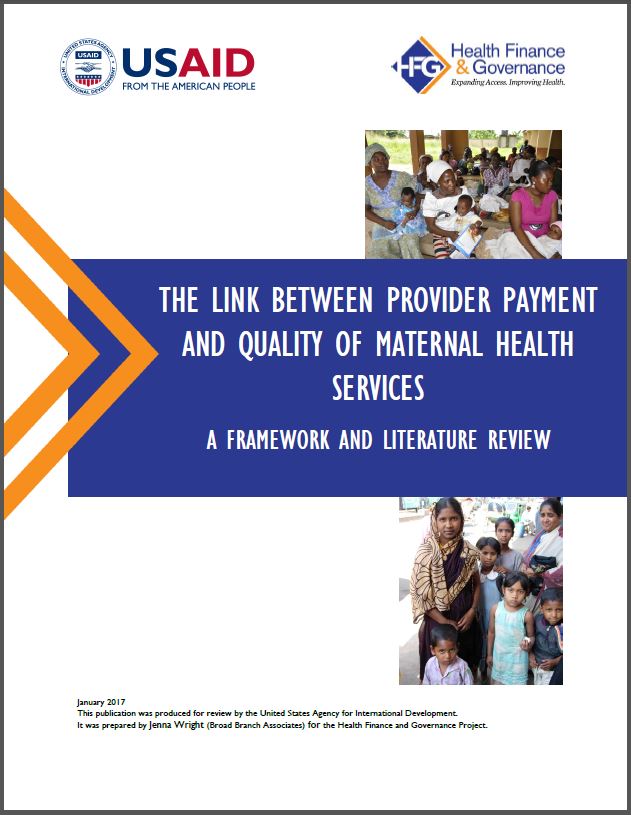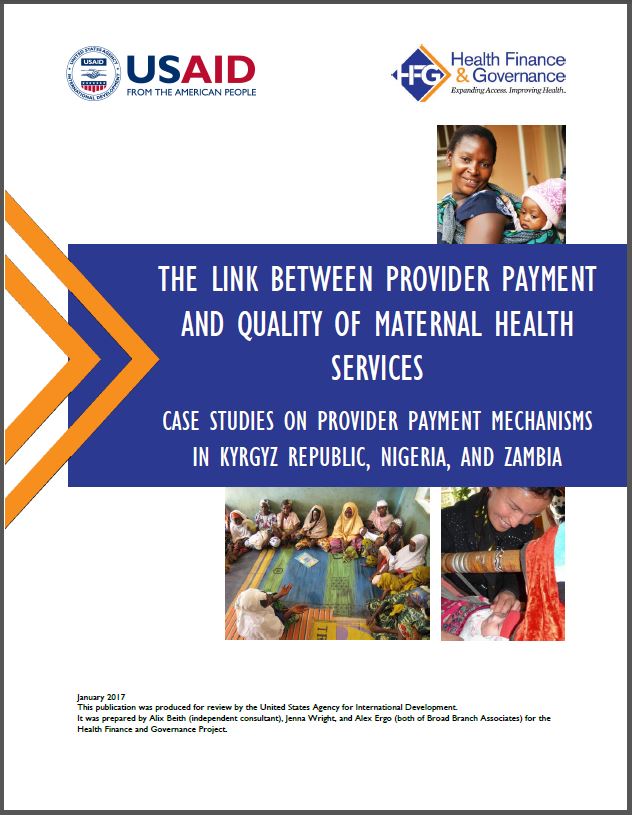Strategic Purchasing to Improve the Quality of Maternal Health Services
In many low- and middle-income countries (LMICs), the health sector faces significant resource constraints and poor maternal health indicators, leaving the government searching for ways to maximize resources and improve maternal health outcomes. These efforts are accompanied by the growing recognition that access to services is not enough to reduce high rates of maternal morbidity and mortality: the quality of the services delivered must be ensured as well.
USAID supports efforts by large health payers, such as governments of LMICs, to improve health system performance by combining a quality measurement system with a reconfigured provider payment system. To help illustrate how provider payment is linked to the quality of maternal health services, the USAID-funded Health Finance and Governance (HFG) project developed a conceptual framework and analyzed provider payment systems in 16 countries where payment is linked with quality measurement. Two reports highlight design features and context-specific implementation requirements of such systems, and draw lessons that may be applied to the design and implementation of these systems elsewhere.
Collaboration between policymakers and program managers in the quality of care and health financing spheres is increasing. These disciplines share a common goal of maximizing health system outputs and population health outcomes using available resources. The Link between Provider Payment and Quality of Maternal Health Services: A Framework and Literature Review and its accompanying case study report speak to both audiences, aiming to inform and encourage innovation through this collaboration.





